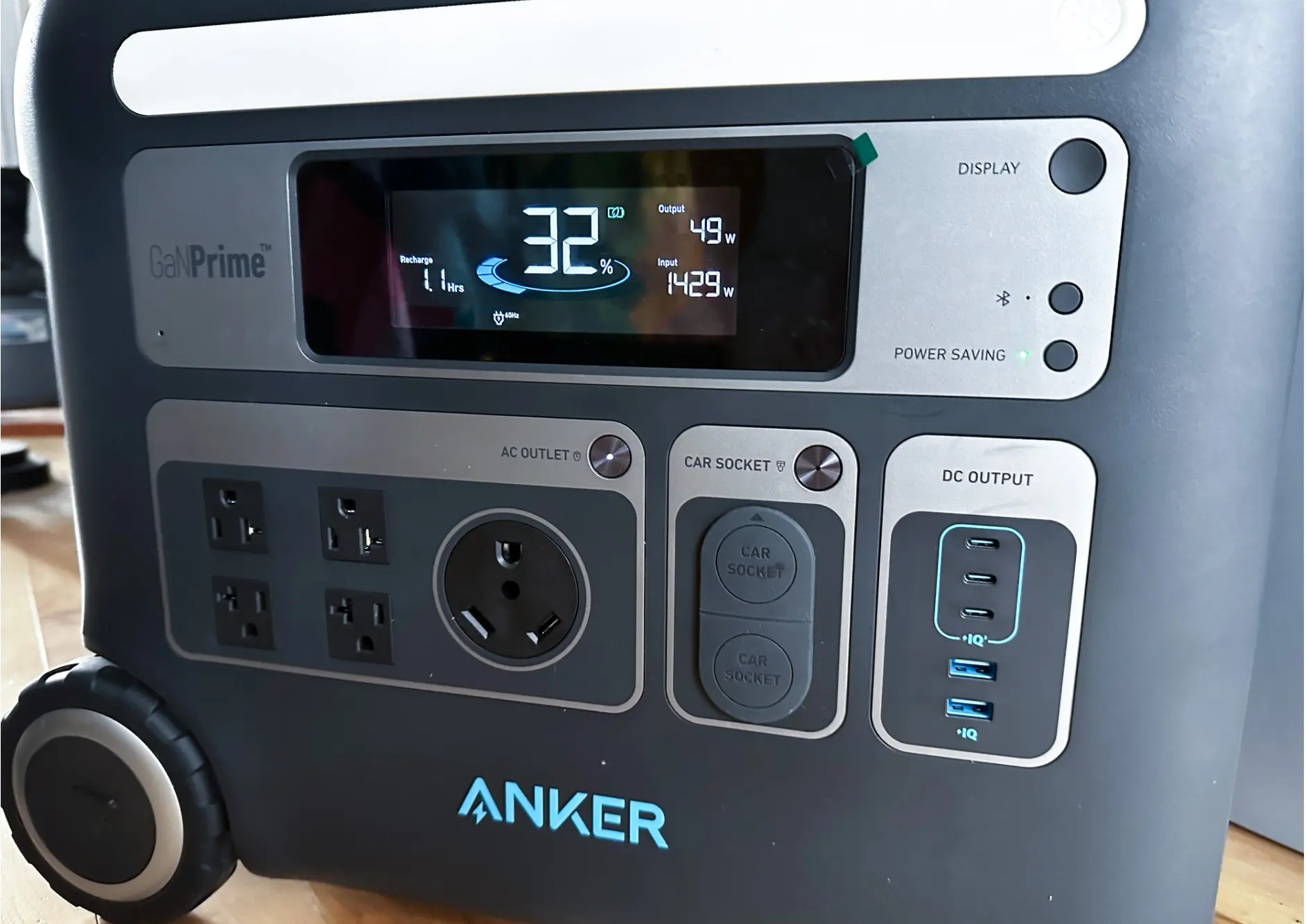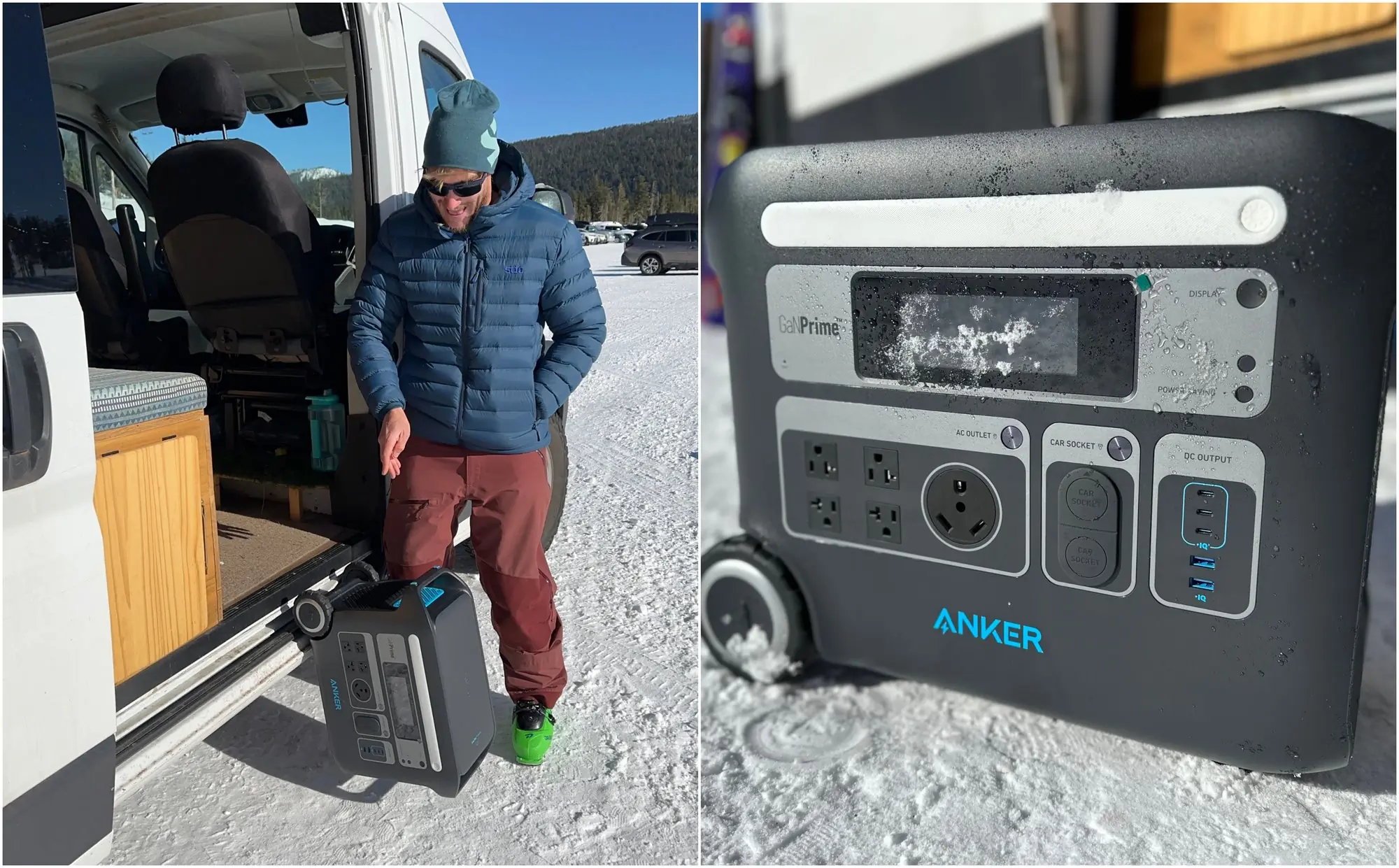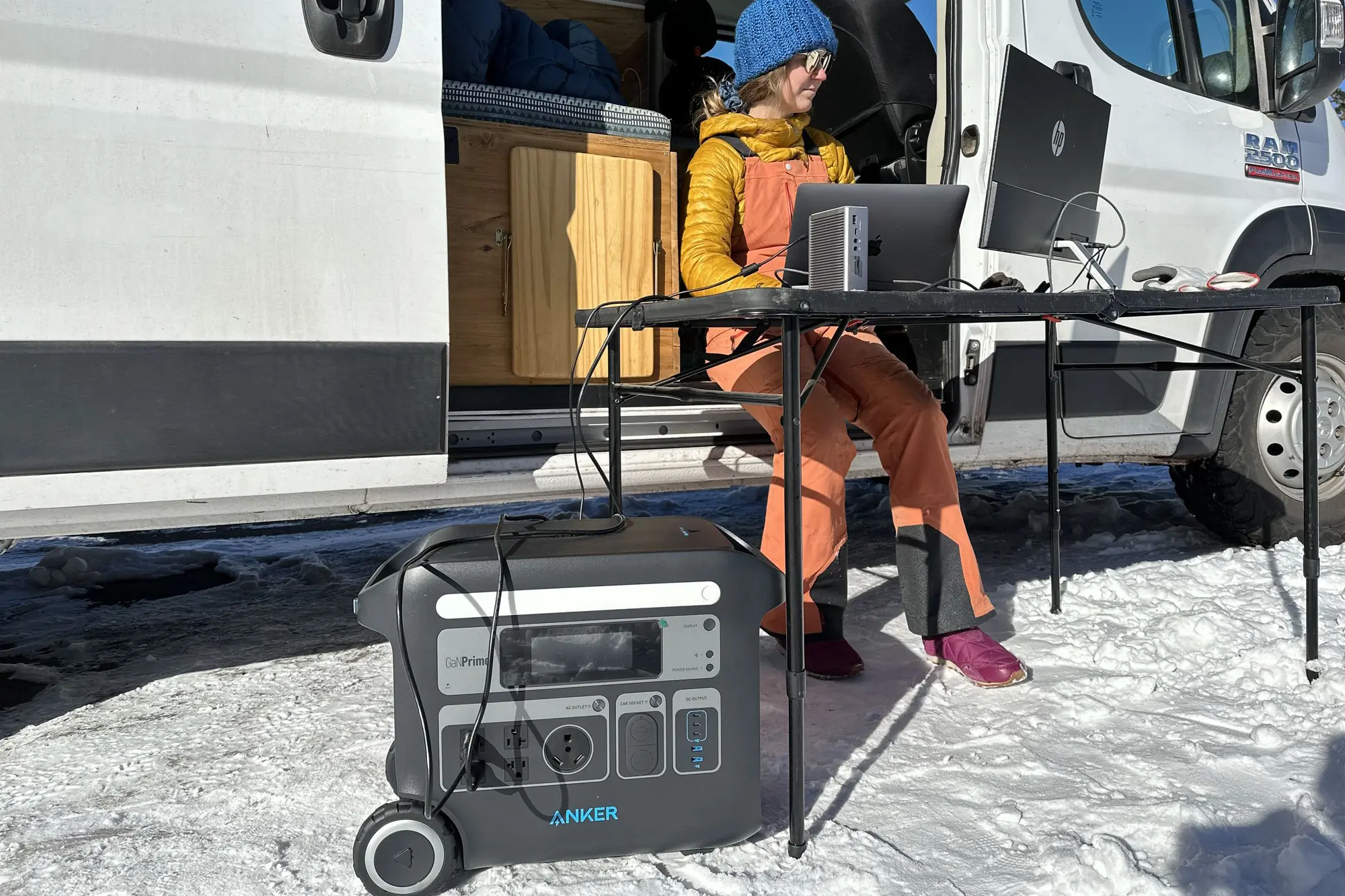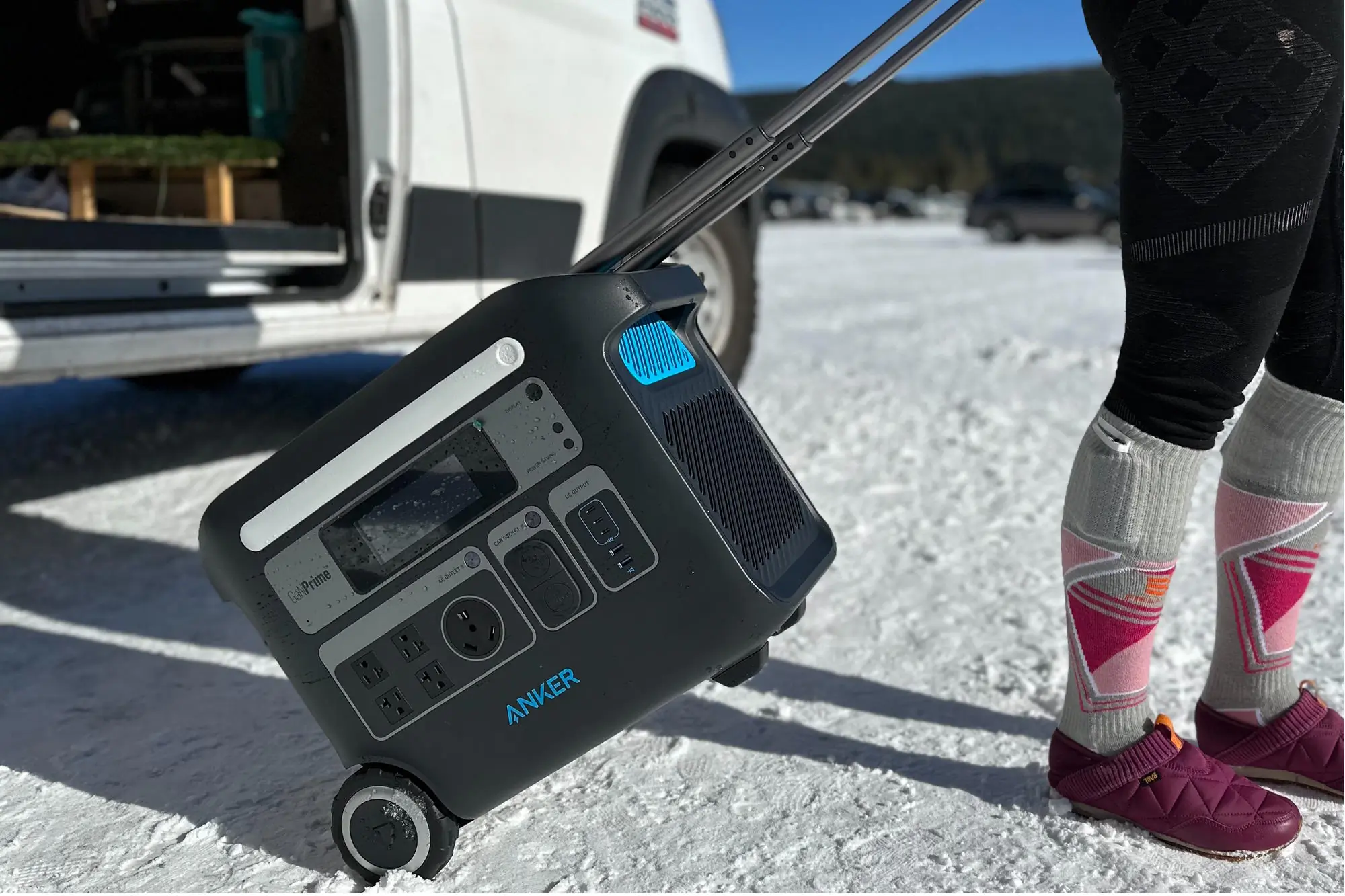One of the many perks of remote or hybrid work is the opportunity to WFV (work from van), so I decided to use that perk as the perfect opportunity to test Anker’s new PowerHouse 767. Under normal to light use, I found it honestly difficult to drain this product’s battery, so for testing purposes, I brought a few items that I wouldn’t normally van life with along as well: a blender, a coffee machine, an external monitor, a toaster, and an air fryer.
I have had a van for a number of years. In it, I have two 100Ah (converts to 2,400Wh) AGM batteries, charged off both the vehicle alternator and two 160W solar panels. I use only 12V/DC power in my van, as I never got around to adding an inverter. This means I lack the ability to power any of the luxury items I listed above, so I was excited to see what my life could be like with the help of this power station.
In short: The PowerHouse 767 ($1,999) boasts a 2,048Wh capacity and huge 2,400W AC output. This is considerably more than its predecessor, the PowerHouse 757, which has a capacity of 1,229 Wh and 1,500 W (read our review), but at a proportionately steeper price. That being said, if you frequently find yourself in remote or off-grid locations, and having power to handle anything is what you’re after, the Anker PowerHouse 767 fulfills that, with finesse and ease.
- Capacity: 2,048 Wh / 2,400 W
- EV-grade LiFePO4 batteries:
- 12 ports: 4 AC, 1 TT-30, 2 car ports, 2 USB, 3 USB-C
- Lifespan: 3,000+ cycles/10 years
- Time to recharge: 80% in 1.4 hrs., 100% in 2.5 hrs.
- 5-year warranty:
- Smart temperature control:
Pros
- Huge capacity
- Fast charge time
- Number of ports
Cons
- Heavy, though still portable
Anker PowerHouse 767 Review
First Impressions: Portable, to a Point
Upon receiving the box, the first thing you’ll notice about this product is its weight (30.5 kg/67 pounds). It’s one of those “lift with your legs” products. However, for its capacity, the weight is unsurprising. Anker addresses the issue of weight with the addition of wheels, which is a step up from the 757. The wheels roll pretty nicely (on various surfaces), so I found it easy to move around. It also has well-placed handles for easy lifting. Though it’s heavy, it’s fairly compact in terms of size (20.5 x 15.5 x 10 inches). This makes it easy to take in and out of a van or camper, as well as use around the house, shop, or garage, for example.

With 12 ports (4 AC, 1 TT-30, 2 car ports, 3 USB-C, 2 USB), I was determined to plug every hole and see how long it lasted. I made myself and my friends some coffee and breakfast, and then got on with my workday using dual monitors. For lunch, I made myself some food in the air fryer, and when happy hour rolled around, I decided to blend up some margaritas for myself and the folks coming back from a ski tour. Having this extra source of non-DC power in the van was … luxurious.
At the end of a day of what I viewed to be excessive power use, trying in earnest to run this thing down, I still had several days’ worth of battery left according to the digital display. This display gives you a range of useful information: input/output, percent battery remaining, how many more days it will last at the current output, as well as what ports are being used. This is a pretty standard display feature across other power banks on market, granted. It was particularly interesting to me to compare the power use of the various items I used. You can also view these metrics, as well as control the power station remotely via the use of the Anker app.

Anker also advertises this product’s drop-proof design. While it went against all of my instincts to do this, I had my partner give it a few good pushes out of the van in the spirit of giving it a thorough test. Turns out, within reason, it does appear to be drop-proof. It’s also backed with a 5-year full-device warranty, in case you decide to test this feature yourself.
Anker 767’s Best Features
What is arguably most impressive about this power station, as well as what sets it apart from competitors’ products, is that the entire thing charges in about 2 hours. Anker states that it charges from 0-80% in 1.4 hours and 0-100% in 2.5 hours. When I tested this, it reached 80% in 1 hour and 25 minutes, and 100% in an hour and a half, so pretty much in line with what is advertised. Comparing this to how long it takes to charge my little 20,000mAh power bank to full power (up to 8 hours), charging the PowerHouse 767 is insanely efficient.
All that said, I had to make an effort to burn through the battery. Under normal circumstances, my typical use (in the van) would be charging things like small electronics, my 12V refrigerator, possible kitchen appliances, etc. I have full faith that this could last me days if not weeks at a time between charges. Even longer with the addition of Anker’s solar panels, which can be purchased to go with it.




Anker PowerHouse 767: Final Thoughts
Overall, I found this product to be efficient, easy to use, and easy to transport. For a van or camper setup, the PowerHouse 767 could be a great alternative to a messy DIY electrical setup (like the one I currently have). For most, the main hangup will be the price tag. That being said, the Anker 767 does cost less than some other high-capacity stations out there — it’s not even close to the top of the market in terms of price.
While my messy DIY electrical setup cost a little bit less, the trade-off of the plug-and-play (see what I did there?) ease of use and versatility of the Anker PowerHouse 767 seems like a worthy justification for the price.









